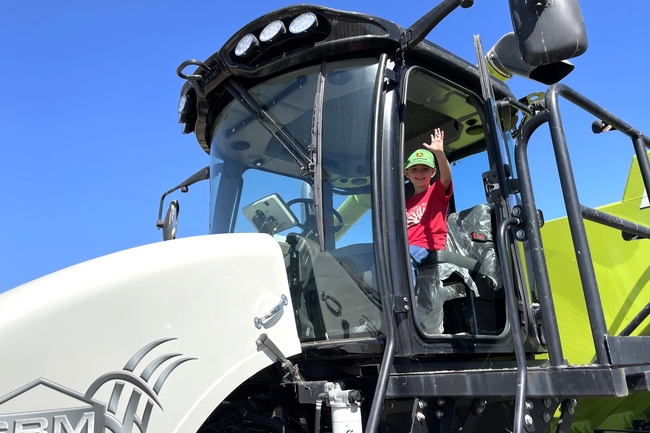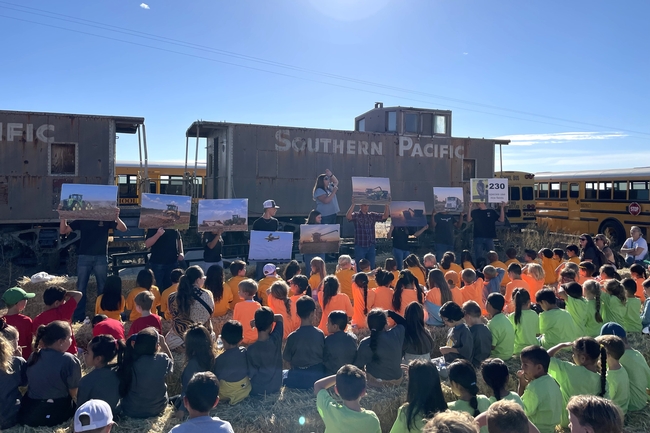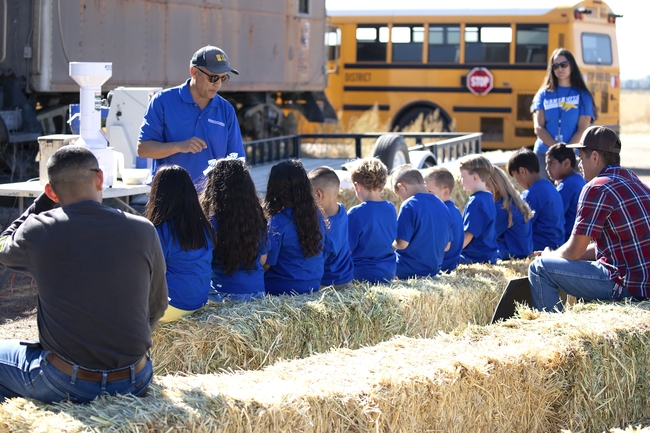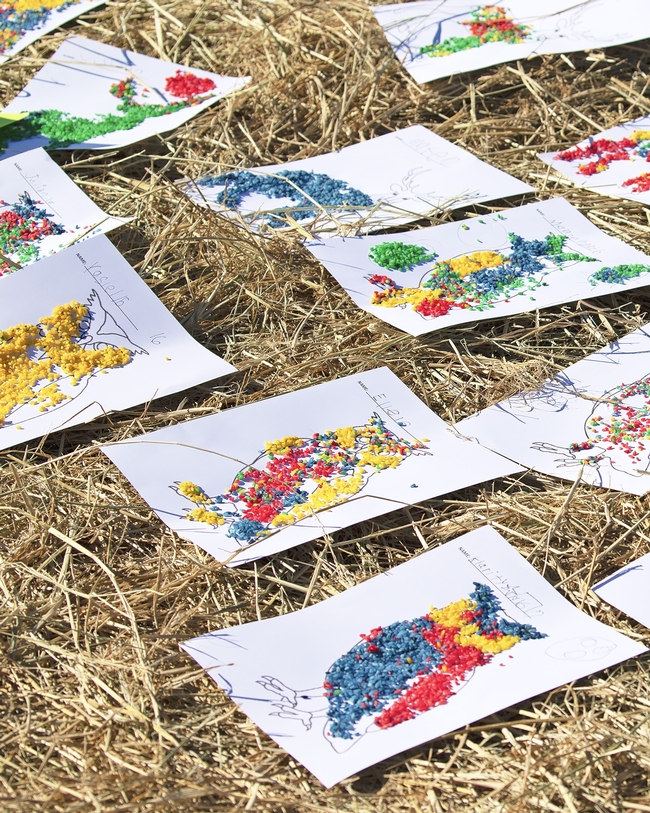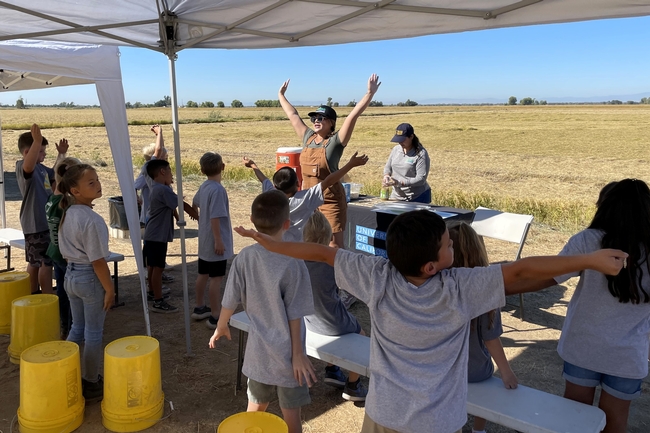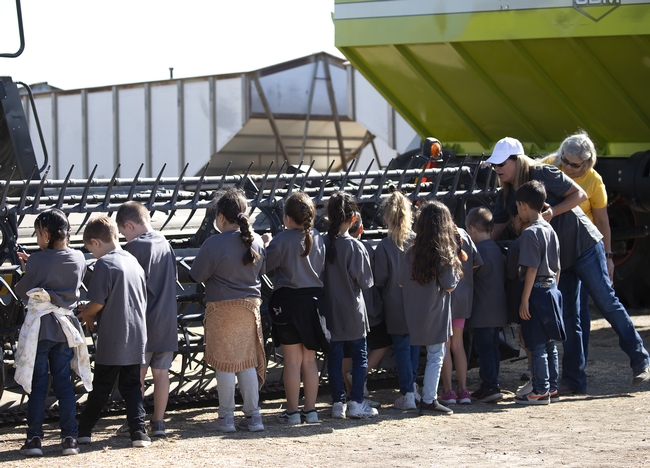Posts Tagged: Butte
Extreme weather accelerates nitrate pollution in groundwater
Extreme weather spurred by climate change, including droughts and heavy rains, may increase the risk of nitrates from fertilizers ending up in groundwater, according to a recent study from researchers at the University of California, Davis. The study found heavy rains after a drought caused nitrates to seep 33 feet under farm fields in as little as 10 days. The study was published in Water Resources Research.
“The conventional wisdom was that it could take several weeks to years for nitrates to move from the crop root zones to reach groundwater,” said corresponding author Isaya Kisekka, a professor in the Departments of Land, Air and Water Resources and Biological and Agricultural Engineering. “We found these extreme events, such as California's atmospheric rivers, are going to move nitrate more quickly.”
In this study, different methods were used to measure how much nitrate, a component of nitrogen fertilizer, was seeping down through the soil in a tomato and cucumber crop near Esparto, California. Scientists conducted their research from 2021 until 2023 when California was experiencing periods of drought followed by atmospheric rivers. They measured nitrate during both the growing seasons and the rainy seasons.
Drought can leave more nitrogen in soil
Previous studies have shown about 40% of nitrogen fertilizer used for vegetables isn't absorbed by the plants but remains in the soil. During droughts, crops don't use nitrogen efficiently, leading to excess nitrogen in the soil. This study found that if a drought is then followed by heavy rainfall, that sudden burst of water causes nitrate to seep in groundwater more quickly. The nitrate concentration in the shallow groundwater exceeded the U.S. Environmental Protection Agency maximum contaminant level of 10 milligrams per liter for drinking water.
“In California, we often say we swing between droughts and floods,” said Kisekka. “These extreme events that come with climate change are going to make the risk of these chemicals ending up in our drinking water much more severe.”
Groundwater is the primary source of drinking water for most of California's Central Valley. In some regions, such as the Tulare Lake Basin, nearly one-third of drinking and irrigation wells exceed the EPA's safe nitrate level. High nitrate levels in drinking water can increase health risks, especially for young children. It may also increase the risk of colorectal cancer.
Need for real-time soil nitrate monitoring
Central Valley farmers are required to report to the Regional Water Board how much nitrogen they applied to their field and how much was removed as part of the crop's yield. The study compared different ways of monitoring when nitrate from fertilizers seep into groundwater. Kisekka said the results highlight the need for affordable, real-time soil nitrate monitoring tools to help farmers manage fertilizer use efficiently.
By using conservation practices that limit leftover nitrates in the crop's root zone after harvest, farmers can help reduce nitrate contamination in groundwater.
This study's data will also help improve a model called SWAT, which is used to track nitrate seepage into groundwater across California's Central Valley. This effort is part of the Central Valley Water Board's program to regulate irrigated farmlands.
Other UC Davis authors include Iael Raij Hoffman, Thomas Harter and Helen Dahlke.
The study was supported by the USDA Natural Resource Conservation Service through its Conservation Effects Assessment Project. The national project is designed to assess the effectiveness of conservation practices across different watersheds. The study also had support from the USDA National Institute of Food and Agriculture.
Butte County first graders enjoy ‘ricetastic’ day at local farm
UC Cooperative Extension advisors, educators join growers in showcasing rice production
When Tracy Schohr volunteered in her son's pre-K class a couple years ago, she was stunned to find out that only two of the 20 children had ever been around a tractor. And this was in the rural Butte County community of Gridley, in the heart of California's rice-growing region.
Seeking to introduce more young children to agriculture, Schohr – the University of California Cooperative Extension livestock and natural resources advisor for the area – and her friend Lisa Donati created an event to showcase rice farming.
After the debut of “Ricetastic Day” last year with about 140 students from Gridley in attendance, this year's event on Sept. 19 attracted more than 240 schoolchildren – this time from across south Butte County.
First graders from McKinley Primary School in Gridley, Manzanita Elementary School, Biggs Elementary School and Richvale Elementary School – along with their teachers and many family members – enjoyed hands-on experiences at Schohr's rice and cattle ranch.
“There's a dwindling population that produces the food that we eat across America, so how can we have more people know, appreciate and love agriculture if we don't give them that opportunity?” said Schohr. “That's what this day is really about – to teach them about rice, to teach them about their community, how healthy rice can be, and how the farming and ranching can also create habitat for wildlife. It's all-encompassing.”
Event stations share different aspects of rice
Schohr, who grew up on the family ranch in Gridley, remembers coming with her McKinley schoolmates for a visit. But those field trips had comprised only lunch and a quick “drive-through” tour of the historic farming operation.
For Ricetastic Day, however, Schohr organized – with generous help from local growers and community partners – a more comprehensive half-day of activities. After her brother, Ryan Schohr, welcomed the participants to the family farm, the students formed groups that were led by Gridley FFA youth on a rotation through a variety of stations.
At the milling station, Luis Espino, UCCE rice farming systems advisor, demonstrated how his mini mill machines remove the husks from rough rice to make brown rice, and then polish away the bran layer to make white rice. He had the children see and feel the difference as the rice moved through processing.
“I didn't even know brown rice existed!” exclaimed Elsie, a first grader at McKinley.
A native of Peru, Espino came to study agriculture through his lifelong fascination with biology and living things – and he said events like Ricetastic Day can inspire a similar passion in young people.
“It might spark their curiosity so that they might go into these areas of work in the future or have a career in agriculture, when they see that people do this for a living,” Espino said.
Ray Stogsdill, another McKinley school alumnus, returned to Gridley after college to pursue just such a career. A staff research associate in the lab of UC Davis professor Bruce Linquist, Stogsdill manages on-farm rice variety testing across the region. He volunteered to help Schohr with Ricetastic Day by talking about some of the heavy equipment and providing his perspective for the kids.
“They drive by the fields and they don't know what's out there,” he said. “This gives them a chance to know what they're driving by, so they can say, ‘We have rice here and this is how it works; this is how it grows.' It gives them an idea of what's going on around them.”
Where rice fits within a healthy diet was the focus for the CalFresh Healthy Living, UC Cooperative Extension team, comprising nutrition educators Sunshine Hawjj, Joanna Aguilar and Kenia Estrada, as well as community nutrition, health and food security advisor Veronica VanCleave-Hunt. They talked about how rice – like other grains in that vital food group – gives people energy, and then taught the students an energetic “ricetastic” movement activity.
“Because our program is part of UC Agriculture and Natural Resources, it's important to make the connection between where our food comes from and how it gets on our plate – especially with young kids, so that we can promote value for our local agriculture and our food systems,” VanCleave-Hunt explained.
Activities spark further conversations, learning about agriculture
With rice harvest late due to late planting in the spring, Eric Waterbury of Waterbury Farms was able to take some time to attend the event. Although his family has been growing rice for three generations, he said he appreciates opportunities for the broader community to see all aspects of his work – from the equipment to the processing.
“If the kids walk away from this with one thing, I hope it's that they realize every time they have a meal, somebody was out there working hard to provide that meal,” he said. “It wasn't just the person at the grocery store that provided it for them.”
Schohr added that Ricetastic Day was only possible through the support of the community. Butte County Farm Bureau and Natural Resources Conservation Service staff helped kids make art with colorful dyed rice; neighboring farmer Tinker Storm described how the harvester and “bankout” wagon work; and rice farmers Shelley Beck and Sue Orme read aloud “Daddy's Got Dirt: A California Rice Story,” a children's book written by a local rice grower.
With rice at the center of physical activities, arts and crafts, and science lessons for the day, the students learned a lot to take home.
“It's nice that the kids got these hands-on learning experiences,” said Ryan Schohr, “so they can go home tonight and, at the dinner table, talk about it with their parents or brothers and sisters, over dinner or over homework – and share what they learned here on the farm and about their community.”
Rebecca Christy, a first- and second-grade teacher at Biggs Elementary, said she is excited to return to the classroom and hear from her students about all that they learned during the day.
“Every morning right now I'm seeing the big trucks going by our school, and so I'll be able to point that out to them, ‘Where are they going? What are they doing?'” she said. “I can't wait to get back to school and let them tell me about all of this.”
One of her students, Ximena, was finishing her brownbag lunch as the group watched one of the Schohr Ranch harvesters rumble over the field. Despite enjoying a rice cake and a rice cracker earlier, she said her meal was missing one thing.
“Where is my rice, Miss Christy?” she said. “I want rice!”
Master Gardener 2024 Fall Workshop Series
A new season of Master Gardener Workshops is about to start! The series begins September 9th with a session on Neighborhood Habitat Certification, and concludes on December 3rd with a timely workshop on Perennial Vegetable Gardening. In all, this Fall...
Lawn-pocalypse! Surviving Drought
Ah, summer! The season of sunburns, pool parties, and… lawn droughts. If your once lush, green carpet now looks like a crunchy brown doormat, you're not alone. Let's dive into why your yard is staging a dramatic death scene and what you can do to...

Bermuda grass and weeds overtaking drought stressed turf grass.
Master Gardener Spring 2024 Workshop Series
A new season of Master Gardener Workshops is about to start! The series begins February 3 with a timely session on starting summer vegetable plants from seed and concludes at the end of May with an exploration of weeds – how to identify common...


